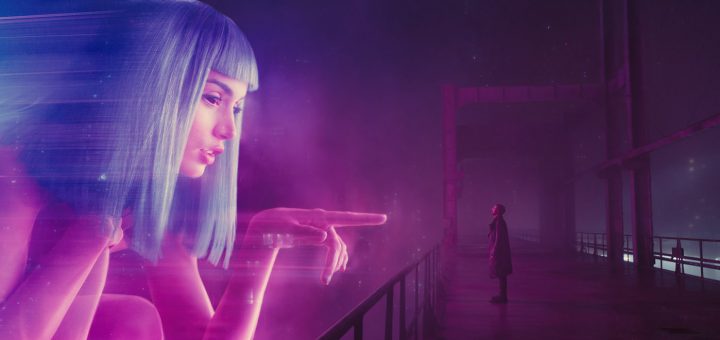Review: The beauty of Blade Runner

How does the anticipated sequel fare against the original?
By Colin Macgillivray, Arts Editor
The original Blade Runner is a phenomenal achievement. The enigmatic mashup of the neo-noir detective genre with an original science fiction premise, is a brilliant study of humanization. It’s a rare piece of art that manages to induce questions from the audience, rather than give them all the answers. The ambiguity, atmosphere make it the gold standard of dystopian fiction in my book. That said, when Blade Runner 2049 was announced, I was both wary and intrigued.
The moment the first teaser hit the internet, I knew that Blade Runner 2049 would be an incredibly visually stimulating movie. With the acclaimed Denis Villeneuve at the helm who showed his knack for science-fiction with last years sleeper hit, Arrival, and with the exceptional Ryan Gosling in the lead role, 2049 immediately had everything going for it.
Then Harrison Ford was announced to return to his role as Rick Deckard, the grizzled protagonist of the first film. I was even more on board than I was before. It is safe to say that with such a star-studded cast, that features the aforementioned Gosling and Ford, the typically fantastic Jared Leto as the film’s main antagonist, as well as the outstanding Robin Wright, 2049 was set up for success. Villeneuve’s masterful directing style, coupled with a beautiful droning score by Hans Zimmer, suggested that everything in this film was going to be perfect. In a sense, there was so much promise, and so much hype, that Blade Runner 2049 was doomed to fail. Luckily, the film is outstanding.
For one, 2049 might have the most incredible visuals in a film I have ever seen. Roger Deakins, who has done masterful work as the director of photography on films such as The Shawshank Redemption and No Country for Old Men, might be at his best here. There are some absolutely jaw dropping visuals. From a haunting look at a dystopian Las Vegas, to a sequence that includes a life-sized artificial intelligence projection. Frankly, it feels like Deakins, Villeneuve, and Zimmer are just showing off throughout the film, proving that they are some of the best at their craft.
The acting is superb as well. Ryan Gosling’s portrayal of the troubled LAPD officer ‘K’ is both subdued and chilling, as moments of intense emotion from the talented actor are on par with some of his best. Reprising his role as Rick Deckard from the first film, Harrison Ford returns as a darker version of the beloved character and with incredible effect. Just as the film feels as if it needs a jolt of energy, Ford’s character is introduced into the fray. His onscreen chemistry with Gosling feels natural, and Ford, who has become known to play a curmudgeonly old man in his recent years, does turn out a surprisingly fleshed out performance.
The supporting cast all deserves praise as well. Ana de Armas, who plays the holographic girlfriend of K, is poised to become a breakout star after her moving performance. Robin Wright is fantastic as always, and the scenes involving Lennie James, Dave Bautista, and Barkhad Abdi are all sublime.
Although this high praise might make it seem like Blade Runner 2049 is a perfect movie, it unfortunately is not. There are some pacing issues. These can occasionally be ignored, however, due to the amazing visuals that are usually on screen. There are some beautiful scenes that seem to be present in the film for the sole purpose of being pretty. Jared Leto’s scenes also seem to suffer from this deliberate slow pace. Although it is definitely intentional for Leto’s performance to be cryptic, drawn-out, and open to interpretation, this leads his scenes to act as a buffer to the much more interesting story of K. At times, the villainy of Leto’s character seemed shoehorned to fit the plot, and the megalomaniacal and capitalist aspects of his character are a tad cliché. This makes 2049 seem a tad too long, with its almost three hour run time already pushing it.
The narrative itself is also not as compelling as the original. 2049 has some absolutely brilliant moments of characterization, but they all seem to derive from Gosling. Sure, Ford has his moments and de Armas completely humanized a holographic projection, but many of the other characters feel flat. Gosling does dominate the screen, and his subtle performance allow his character to have a satisfying arc, but the lack of depth throughout allows the plot to descend into cat-and-mouse level chase sequences, and the film ultimately suffers from spending so much time with Gosling’s character.
As riveting as 2049 is, it falls just short of the original. Blade Runner is a beautiful science-noir that says more about human nature than many dramas. Its themes are deeper, and characters are more fleshed out.
Nonetheless, Blade Runner 2049 is a superb sequel and an absolute masterclass in visual storytelling, yet lacks the substance to make it a modern masterpiece.





